SQL Server 2005 Training, Day 1, Part 1
I have been trained SQL Server 2005 several months ago but I haven’t time to summarize yet so I’m going to write as much as possible. The training course concerns about using MS SQL Server 2005 with MS Visual Studio Visual Basic.NET so some part may contains source code in VB.NET. Most of contents will express using example and figure if you need reference or more detail of functions, you can try search at MSDN, Microsoft.com. I hope that these may be useful for programmers to review.
The training consumes 5 days so I’ll categorize this by days and also separate each day into 2 parts because it’s quite long.
Set up Environment
This is the environment which was set up for the training.
- SQL Server 2005 Express edition with SQL Server Management Studio Express.
- Northwind, pubs and AdventureWorks (Case Insensitive) databases, you can download at Microsoft.com (moved to http://codeplex.com/SqlServerSamples) or at here:
- SQL2000SampleDb for Northwind and pubs.
- AdventureWorksDBCI for AdventureWorks (Case Insensitive).
- Microsoft Visual Studio 2005 for coding VB.NET
Topics in this post
1. Using row_number()
2. Using local temporary table
3. Using CTE
4. Using rank, dense_rank, ntile
5. Technique of WITH
6. Using temp table in a store procedure
7. Using Global temp table
8. Using Synonym
9. Forward cursor
10. Backward cursor
11. Update record using cursor
12. Using Case
13. Variable and conversion
14. Using store procedure
15. Compute Max, Min, Avg
16. Roll up , cube -> use with aggregate
Let’s start
- Open SQL Server Management Studio Express and connect to the SQL Server.
- Open New Query. Before any query, I’ll type use “DatabaseName�? to select the database.
- Using row_number()
Returns the sequential number of a row within a partition of a result set, starting at 1 for the first row in each partition.Example
-
Show row number start from last productname as 1 and so on. And return the result ordering by ascending productname.
use Northwind
SELECT ROW_NUMBER() OVER (ORDER BY productname DESC) AS rownum, productid,productname FROM products ORDER BY productname ASC
- Select only rownum > 60 from the above example and return the result ordering by descend productid.
SELECT * FROM ( SELECT ROW_NUMBER() OVER (ORDER BY productname DESC) AS rownum, productid,productname FROM products ) O WHERE rownum > 60 ORDER BY productid DESC
-
Show row number start from last productname as 1 and so on. And return the result ordering by ascending productname.
- Using local temporary table to store result set. The table will be deleted automatically after close the connection.
Example
- Using CTE (Common Table Expression) as temporary result set.
Example
- Using rank, dense_rank, ntile
rank() – returns the rank of each row within the partition of a result set. The rank of a row is one plus the number of ranks that come before the row in question.
dense_rank() – returns the rank of rows within the partition of a result set, without any gaps in the ranking. The rank of a row is one plus the number of distinct ranks that come before the row in question.
Ntile() – distributes the rows in an ordered partition into a specified number of groups. The groups are numbered, starting at one. For each row, NTILE returns the number of the group to which the row belongs.
Example
USE AdventureWorks SELECT ROW_NUMBER() OVER (ORDER BY city) AS rownum, rank() OVER (ORDER BY city) AS rank1, dense_rank() OVER (ORDER BY city) AS denserank1, Tile1 = NTile(4) OVER (ORDER BY city), city FROM person.address INNER JOIN person.stateprovince AS stateprov ON address.stateprovinceid = stateprov.stateprovinceid WHERE countryregioncode = 'us' AND stateprovincecode = 'az' ORDER BY city
- Technique of WITH.
By using WITH, you can make your query more readable as the example below. Both queries return the same result but notice that the second one is easier to read.Example
USE AdventureWorks SELECT * FROM production.product AS P INNER JOIN (SELECT productmodelid, avg(listprice) AS avgprice FROM production.product GROUP BY productmodelid) AS C ON P.Productmodelid = C.ProductmodelID AND P.ListPrice > C.Avgprice; WITH C AS ( SELECT productmodelid, avg(listprice) AS avgprice FROM production.product GROUP BY productmodelid ) SELECT * FROM production.product AS P INNER JOIN C ON P.Productmodelid = C.ProductmodelID AND P.ListPrice > C.Avgprice
- Using temp table in a store procedure.
Example
CREATE proc test2 AS SELECT * INTO #temp3 FROM northwind..products SELECT * FROM #temp3 EXEC test2 DROP proc test2
- Using Global temp table.
By define as a global, you can called it anywhere until you disconnect from the SQL Server.Example
SELECT * INTO ##temp2 FROM northwind..products -- You can try called this on another new query SELECT * FROM ##temp2
- Using Synonym.
Example
USE AdventureWorks SELECT * FROM person.contact CREATE synonym dbo.contact FOR person.contact SELECT * FROM dbo.contact
- Forward cursor.
- Server-side cursor.
- Cursor, fetch data each record.
- Save memory -> forward only, can’t backward.
- Suit for store procedure.
Example
USE Northwind -- Create new cursor DECLARE product_a cursor FOR SELECT productid,productname,unitprice FROM products ORDER BY productname -- Open a cursor OPEN product_a -- Query records from cursor DECLARE @productid INT,@productname nvarchar(60),@unitprice money fetch NEXT FROM product_a INTO @productid,@productname,@unitprice SELECT @productid,@productname,@unitprice
/* Get only 10 record, declare @i for loop */ DECLARE @i INT SET @i = 0 while @i < 10 BEGIN DECLARE @productid INT,@productname nvarchar(60),@unitprice money fetch NEXT FROM product_a INTO @productid,@productname,@unitprice SELECT @productid,@productname,@unitprice SET @i = @i + 1 END
/* Fetch all record, using @@fetch_status to check end of query */ DECLARE @i INT DECLARE @productid INT, @productname nvarchar(60), @unitprice money SET @i = 1 fetch NEXT FROM product_a INTO @productid, @productname, @unitprice while @@fetch_status = 0 BEGIN SELECT @i AS Number1,@productid, @productname, @unitprice fetch NEXT FROM product_a INTO @productid, @productname, @unitprice SET @i = @i +1 END
/* close cursor */ close product_a /* dispose cursor object */ deallocate product_a
- Backward cursor.
cursor backward – use fetch back … to get previous record.Example
USE Northwind DECLARE product_a scroll cursor FOR SELECT productid,productname,unitprice FROM products ORDER BY productname OPEN product_a /* fetch first ,get first record */ DECLARE @productid INT, @productname nvarchar(60), @unitprice money fetch FIRST FROM product_a INTO @productid, @productname, @unitprice SELECT @productid, @productname, @unitprice
/* fetch last ,get last record */ DECLARE @productid INT, @productname nvarchar(60), @unitprice money fetch LAST FROM product_a INTO @productid, @productname, @unitprice SELECT @productid, @productname, @unitprice
/* fetch absolute 10 ,get a record 10th*/ DECLARE @productid INT, @productname nvarchar(60), @unitprice money fetch absolute 10 FROM product_a INTO @productid, @productname, @unitprice SELECT @productid, @productname, @unitprice
/* fetch relative 10 ,get a record relative next 10*/ DECLARE @productid INT, @productname nvarchar(60), @unitprice money fetch relative 10 FROM product_a INTO @productid, @productname, @unitprice SELECT @productid, @productname, @unitprice
- Update record using cursor.
Example
/* Create table productB from Northwind.products with add field price2 */ USE Northwind SELECT * INTO productB FROM products ALTER TABLE productB ADD CONSTRAINT abc1 PRIMARY KEY (productid) ALTER TABLE productB ADD price2 money SELECT * FROM productB
-- Create cursor2 DECLARE cursor2 cursor FOR SELECT productid,unitprice, price2 FROM productB FOR UPDATE OPEN cursor2 /* No need to declare productid, but the table should have a primary key */ -- Update field price2 on next record DECLARE @productid INT, @unitprice money, @price2 money fetch NEXT FROM cursor2 INTO @productid , @unitprice , @price2 UPDATE productB SET price2 = 50 WHERE CURRENT OF cursor2 SELECT * FROM productB
-- Create cursor3 DECLARE cursor3 cursor FOR SELECT unitprice, price2 FROM productB FOR UPDATE OPEN cursor3 -- Update field price2 by compute difference value with the previous record DECLARE @price3 money SET @price3 = 0 DECLARE @unitprice money, @price2 money fetch NEXT FROM cursor3 INTO @unitprice , @price2 while @@fetch_status = 0 BEGIN UPDATE productB SET price2 = @unitprice - @price3 WHERE CURRENT OF cursor3 SET @price3 = @unitprice fetch NEXT FROM cursor3 INTO @unitprice , @price2 END SELECT * FROM productB
-- Close and deallocate cursors close cursor2 deallocate cursor2 close cursor3 deallocate cursor3 - Using Case.
Example
USE pubs SELECT * FROM employee -- Set NewLevel base on job_lvl SELECT lname, CASE WHEN job_lvl < 100 THEN 'xxx' WHEN job_lvl < 200 THEN 'yyy' ELSE 'zzzz' END AS NewLevel FROM employee
-- Another case example SELECT title_id, SUM(CASE YEAR(ord_date) WHEN 1992 THEN qty ELSE 0 END) AS Y1992, SUM(CASE YEAR(ord_date) WHEN 1993 THEN qty ELSE 0 END) AS Y1993, SUM(CASE YEAR(ord_date) WHEN 1994 THEN qty ELSE 0 END) AS Y1994 , SUM(qty) AS Total FROM sales GROUP BY title_id
- Variable and conversion.
Example
USE pubs -- Declare variable DECLARE @SQL nvarchar(500) SET @SQL = 'select * from titles' EXEC(@SQL)
-- Convert to string SELECT CONVERT(nvarchar(40), getdate()) SELECT CAST(getdate() AS nvarchar(4))

- Using store procedure.
Example
- Create a procedure test_a
USE pubs -- Create Procedure CREATE proc test_a (@Year1 nvarchar(4), @Year2 nvarchar(4)) AS BEGIN DECLARE @SQL nvarchar(4000) SET @SQL = 'select title_id ' DECLARE @i INT, @j INT, @k INT SET @i = CONVERT(INT,@Year1) SET @j = CONVERT(INT,@year2) SET @k = @i while @k < = @j BEGIN SET @SQL = @SQL + ',sum(case year(ord_date) when ' + CONVERT(nvarchar(40),@k) + ' then qty else 0 end) as Y' + CONVERT(nvarchar(40),@k) SET @k = @k +1 END SET @SQL = @SQL + ' from sales group by title_id with rollup' EXEC (@SQL) END
- Execute procedure test_a
EXEC test_a '1992','1994'
- Create a procedure test_b with return value
CREATE proc test_b (@Year1 nvarchar(4), @Year2 nvarchar(4)) AS BEGIN DECLARE @SQL nvarchar(4000) SET @SQL = 'select title_id ' DECLARE @i INT, @j INT, @k INT SET @i = CONVERT(INT,@Year1) SET @j = CONVERT(INT,@year2) SET @k = @i while @k < = @j BEGIN SET @SQL = @SQL + ',sum(case year(ord_date) when ' + CONVERT(nvarchar(40),@k) + ' then qty else 0 end) as Y' + CONVERT(nvarchar(40),@k) SET @k = @k +1 END SET @SQL = @SQL + ' from sales group by title_id with rollup' EXEC (@SQL) RETURN @@rowcount-1 END -- Execute procedure test_b DECLARE @q INT EXEC @q = test_b '1992','1994' SELECT @q
- Multiple return values
Example
CREATE proc test_c (@Year1 nvarchar(4), @Year2 nvarchar(4),@sum1 INT output,@avg1 INT output) AS BEGIN DECLARE @SQL nvarchar(4000) SET @SQL = 'select title_id ' DECLARE @i INT, @j INT, @k INT SET @i = CONVERT(INT,@Year1) SET @j = CONVERT(INT,@year2) SET @k = @i while @k < = @j BEGIN SET @SQL = @SQL + ',sum(case year(ord_date) when ' + CONVERT(nvarchar(40),@k) + ' then qty else 0 end) as Y' + CONVERT(nvarchar(40),@k) SET @k = @k +1 END DECLARE @k3 INT SET @SQL = @SQL + ' from sales group by title_id' EXEC (@SQL) SET @k3 = @@rowcount - 1 SELECT @sum1 = SUM(qty), @avg1 = avg(qty) FROM sales WHERE YEAR(ord_date) BETWEEN CONVERT(INT, @year1) AND CONVERT(INT,@year2) RETURN @k3 END DECLARE @a INT,@b INT,@c INT EXEC @a = test_c '1992','1994',@b output, @c OUT SELECT @a,@b AS sum1,@c AS avg1
- Create a procedure test_a
- Compute Max, Min, Avg.
Example
SELECT stor_id, ord_num, qty FROM sales ORDER BY stor_id compute MAX(qty), MIN(qty), avg(qty)
-- Compute by – use with order by SELECT stor_id, ord_num, qty FROM sales ORDER BY stor_id compute MAX(qty), MIN(qty), avg(qty) BY stor_id
- Roll up , cube -> use with aggregate
Example
SELECT stor_id,ord_num,SUM(qty) AS sumqty FROM sales GROUP BY stor_id, ord_num WITH rollup
-- Cube SELECT stor_id,ord_num,SUM(qty) AS sumqty FROM sales GROUP BY stor_id, ord_num WITH cube






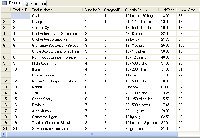

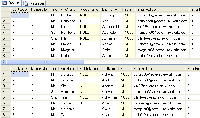
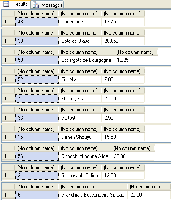
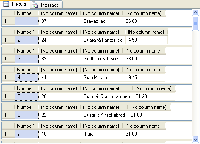



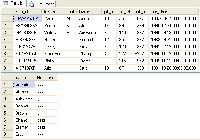
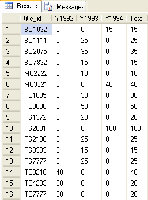
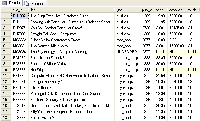
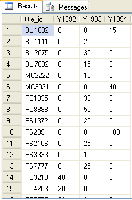
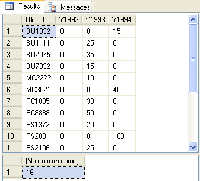
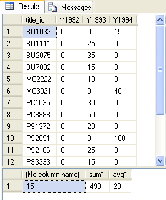
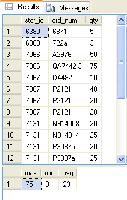



Thanks for your sharing. Microsoft had remove sample database for 2005.